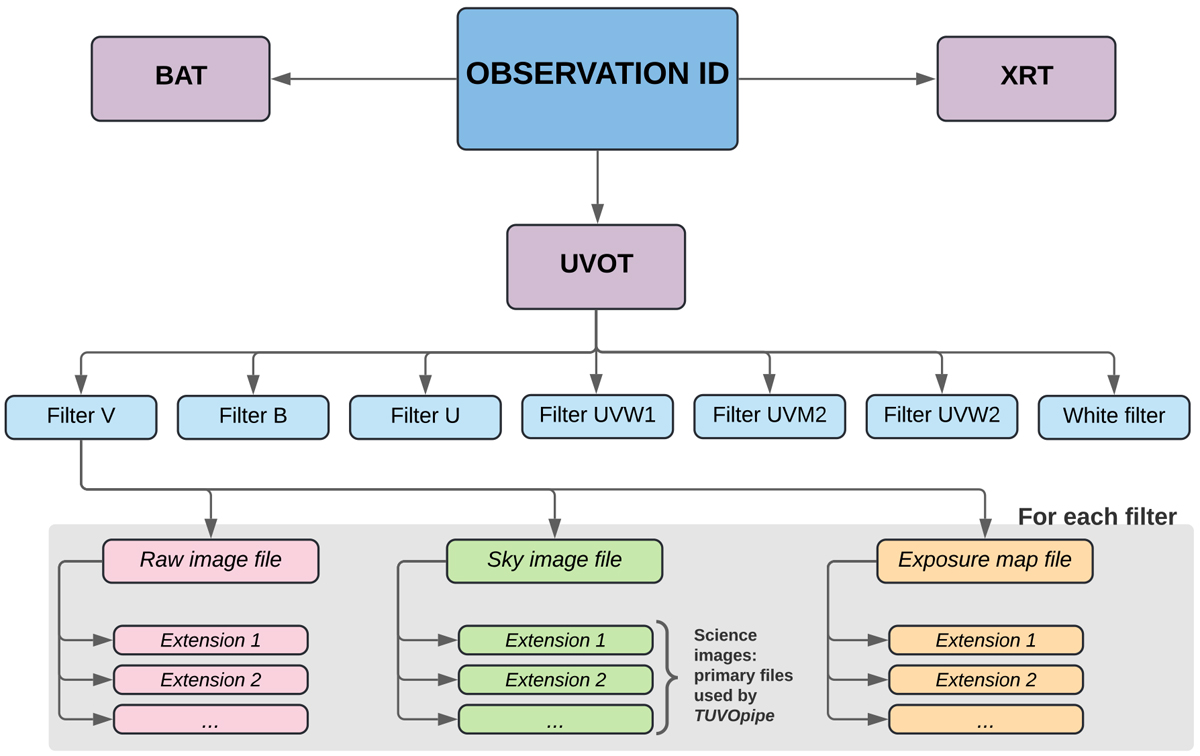Fig. 1

Download original image
Data structure of Swift ObsIDs, which contain data obtained with the BAT, the XRT, and the UVOT. For the UVOT, the data are then further separated by filter, for all filters with which data were obtained for the given ObsID. We note that the UVOT is also equipped with a blocking filter, not shown in the figure. Within each filter, the data are separated into three primary files: the raw image file, the reduced sky image file, and the exposure map file (see Sect. 2.3). Each of these three files is composed of a number of extensions, which can be extracted and analysed independently of each other. Each extension is an image created from a single UVOT exposure in a particular filter (i.e. a snapshot). Extensions of the different file types correspond to each other (e.g. extension 1 of the raw image file is used to create extension 1 of the sky image file).
Current usage metrics show cumulative count of Article Views (full-text article views including HTML views, PDF and ePub downloads, according to the available data) and Abstracts Views on Vision4Press platform.
Data correspond to usage on the plateform after 2015. The current usage metrics is available 48-96 hours after online publication and is updated daily on week days.
Initial download of the metrics may take a while.


